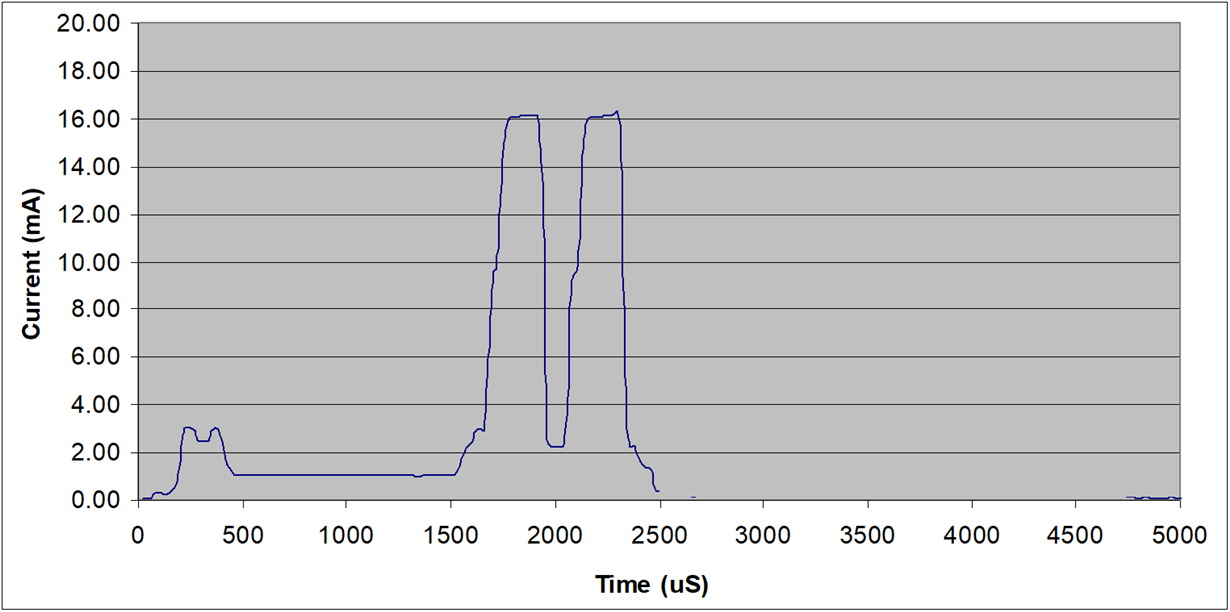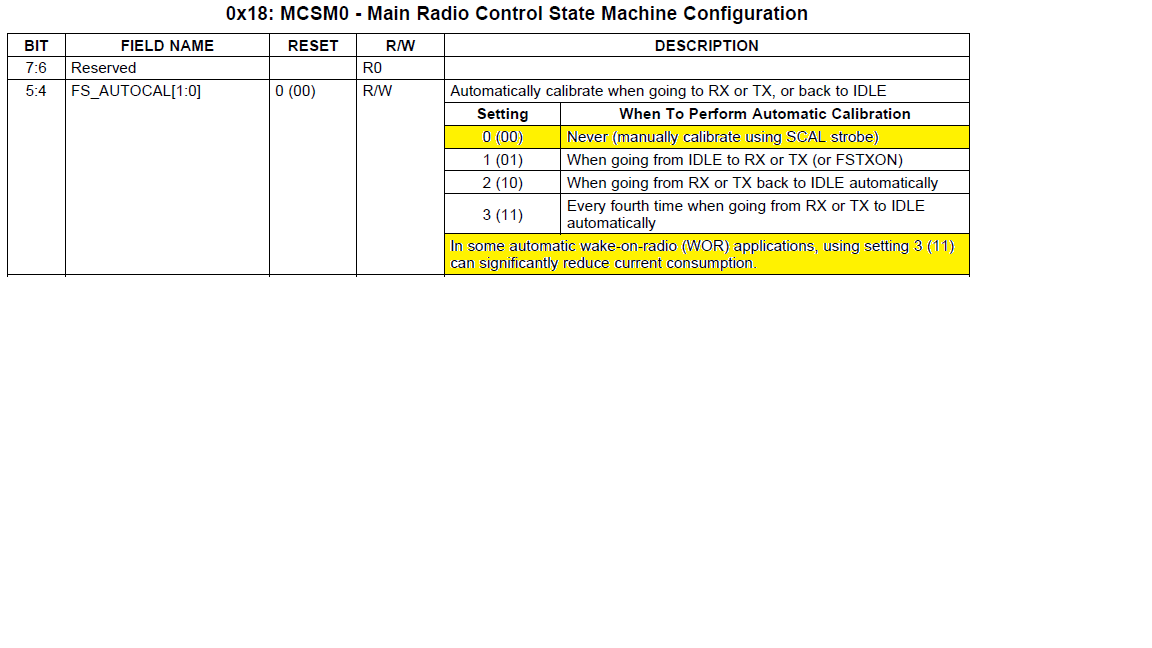Other Parts Discussed in Thread: CC1200, CC1120
Tool/software: TI-RTOS
We are using the CC1310 Launchpad to measure average power consumption of a basic polling receiver using the sniff mode example code. We are measuring almost the exact same curve shown here (https://e2e.ti.com/support/wireless_connectivity/proprietary_sub_1_ghz_simpliciti/f/156/p/547760/2005088
While the actual RX active time looks pretty good, there is a lot of time before this that is taking about 4mA. I'm guessing much of this time is oscillator settling time, and this adds up to a large part of our power budget. The average power for checking the radio receiver, assuming a wake-up once per second, is about 10.5uA.
Is there any way to reduce this current consumption or time? We've experimented with the RX bandwidth and datarates, but these only slightly shorten the RX active time, and have no affect on the timing / current draw before the RX becomes active.
This is actually worse than our older CC430, which only took about 1mA during this time. The average power for checking the radio receiver, assuming a wake-up once per second, was only about 7.2uA, and this was for checking 2 channels! Here's a plot from our older CC430 performing the same radio check for two channels instead of just one:




